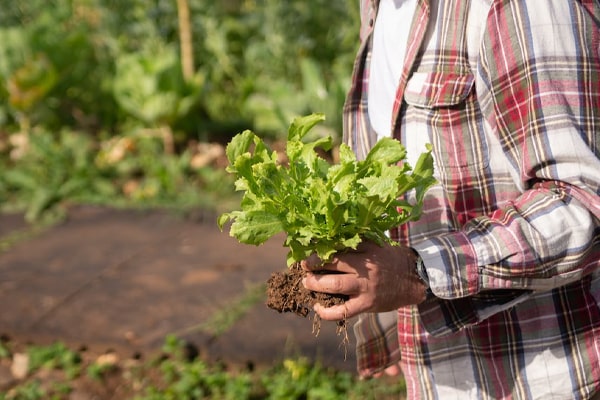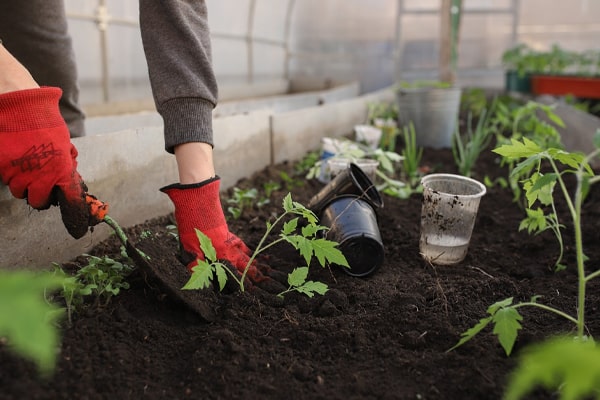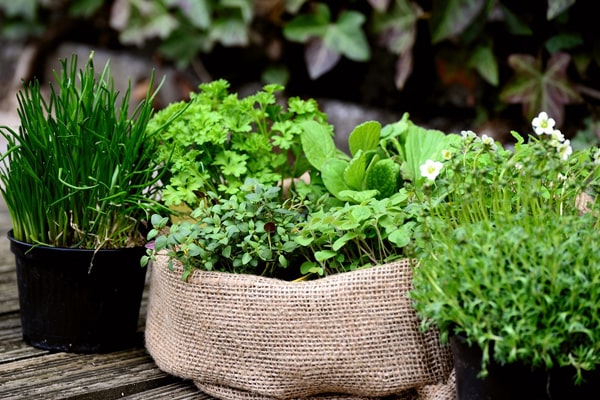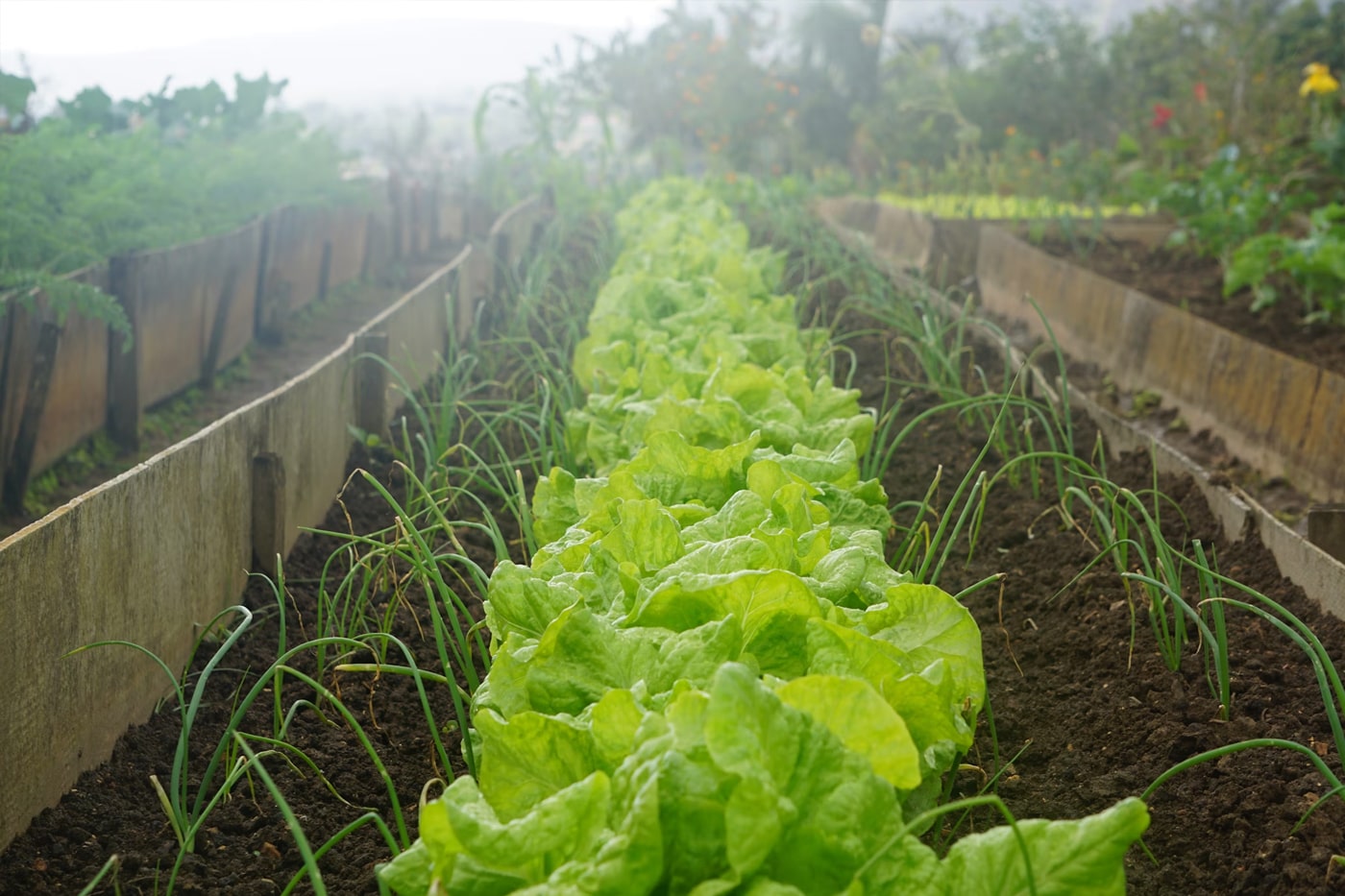Should you build an edible garden?
Building an edible garden is a good idea because it provides fresh and healthy produce, gives you control over your food choices, reduces environmental impact, offers educational opportunities, and promotes well-being through enjoyable outdoor activity.
It’s a simple and rewarding way to enhance your life and make a positive impact on the world around you.
Contents []
Is Building an Edible Garden a Good Idea?

The quick answer is yes! Growing your own food has many benefits.
An edible garden is a fantastic way to enjoy fresh, nutritious produce from your backyard. This ensures that you have access to healthy and delicious fruits, vegetables, and herbs and saves you money in the long run.
Additionally, gardening provides a relaxing and fulfilling activity. It allows you to spend time outdoors, getting fresh air and exercise. Planting, nurturing, and harvesting brings a sense of accomplishment, contributing positively to your mental well-being.
Tending to an edible garden is also a great way to connect with nature and reduce your environmental impact. Growing your own food decreases the need for transportation and packaging associated with store-bought produce, reducing your carbon footprint. It’s a small yet meaningful step towards a more sustainable lifestyle.
If you have kids, building an edible garden lets you teach them about the life cycle of plants, from seed germination to harvesting, promoting a greater understanding of where their food comes from. This hands-on experience can also instill a sense of responsibility and appreciation for nature.
Additionally, when planning an edible spring garden, it’s essential to consider the climate and soil conditions specific to your location for optimal growth. Incorporating companion planting strategies can also help maximize yields and deter pests.
Read: How To Prepare Your Garden For The Spring
Fruits and Vegetables to Plant in Your Edible Spring Garden

Planting a variety of fruits and vegetables in your edible spring garden not only provides fresh, nutritious produce but also offers a rewarding and educational experience.
Each plant has its own specific requirements, but with a little care and attention, you can enjoy a bountiful harvest that contributes to a healthier and more sustainable lifestyle. Also, there are several spring-themed garden designs that you can try if you want to upgrade your yard. Below are some of the fruits and vegetables to add to your spring edible garden:
Tomatoes: Tomatoes are a popular choice for any edible spring garden. These vibrant red, juicy fruits thrive in warm weather. They are rich in vitamins and antioxidants, making them a nutritious addition to your meals. Tomatoes are versatile; you can grow them in containers or directly in the ground. Be sure to support the plants as they grow using stakes or cages.
Tomatoes are relatively easy to grow and come in various sizes and colors, including cherry tomatoes and heirloom varieties. They need well-draining soil and plenty of sunlight. Water consistently, keeping the soil consistently moist but not waterlogged. Adding a layer of mulch around the plants helps retain moisture and prevents weeds.
Strawberries: Strawberries are delightful spring fruits that bring a burst of sweetness to your garden. These low-maintenance plants are perfect for small spaces or hanging baskets. Strawberries are not only tasty but also packed with vitamin C and antioxidants. Plant them in well-draining soil and provide plenty of sunlight for optimal growth.
Strawberries are perfect for beginner gardeners, as they don’t require much space and can even be grown in hanging containers. Plant them in soil with good drainage and water regularly, making sure the soil doesn’t dry out completely. Mulching around the plants helps retain moisture and keeps the strawberries clean. Serve the fresh fruits as is or as garnish and ingredients in various recipes.
Lettuce: Lettuce is a cool-season vegetable that thrives in the mild temperatures of spring. It’s a staple for salads and provides essential nutrients like vitamins A and K. Lettuce is a quick-growing plant, making it a rewarding choice for your spring garden. Various types, including leaf lettuce, romaine, and butterhead, offer a range of textures and flavors.
Lettuce is a great choice for early spring planting. Plant the seeds in well-drained soil and keep the soil consistently moist. You can sow lettuce directly in the ground or in containers. Harvest leaves when they reach the desired size, and you’ll have a continuous supply of salad ingredients throughout the season. Harvest in the morning or evening when temperatures are cooler to prevent bitterness.
Carrots: Carrots are root vegetables that are perfect for spring planting. These crunchy, sweet treats are rich in beta-carotene, promoting healthy vision. Carrots prefer loose, well-draining soil to allow their roots to develop properly. Consider growing different colored varieties for a visually appealing and nutritious harvest.
Carrots require loose soil to prevent them from becoming stunted or deformed. Prepare the soil by loosening it to a good depth before planting. Water consistently to keep the soil evenly moist. Thin the seedlings as they grow to ensure proper spacing, allowing each carrot to develop to its full potential. Harvest when they reach the desired size, usually around 2 inches in diameter.
Peas: Peas are a cool-season crop that thrives in the spring. These versatile legumes are delicious and rich in protein, fiber, and vitamins. Peas come in various types, including snap peas, snow peas, and shelling peas. They can be grown vertically, making them suitable for smaller spaces.
Peas prefer cooler temperatures, so spring is an ideal time for planting. Provide support for pea plants to climb, such as stakes or trellises. Plant the seeds in well-draining soil and water consistently. Peas fix nitrogen in the soil, benefiting neighboring plants. Harvest peas when the pods are plump and the peas inside are tender. Regular harvesting encourages continuous production.
Radishes: Radishes are quick-growing root vegetables that add a zesty crunch to salads. They are excellent for early spring planting, as they prefer cooler temperatures. Radishes come in various colors and shapes and are a good source of vitamin C. Plant them in well-drained soil, and they’ll be ready for harvest in just a few weeks.
Radishes are one of the fastest-growing vegetables, making them perfect for impatient gardeners. They prefer loose soil, so prepare the ground by loosening it before planting.
Radishes need consistent moisture for optimal growth. Harvest when the roots are firm and reach the desired size, usually within 20-30 days after planting. Radishes are an excellent choice for introducing kids to gardening due to their quick results.
Herbs: Growing herbs like basil, mint, and chives in your spring garden adds fresh flavors to your culinary creations. Herbs are not only delicious but also rich in essential oils and antioxidants. These aromatic plants thrive in the spring and can be grown in containers or in the garden.
Herbs are relatively easy to grow and can be cultivated in small spaces. Plant them in well-draining soil, and they’ll reward you with aromatic leaves throughout the season. Herbs like basil and chives can be started from seeds or purchased as seedlings.
On the other hand, Mint tends to spread, so it’s often best grown in containers to prevent it from taking over your garden. Regular harvesting of herbs promotes bushier growth and enhances their flavor.
Bell Peppers: Bell peppers are colorful and sweet additions to your edible garden. These warm-season vegetables can be started indoors in early spring and transplanted outdoors once the weather warms up. Bell peppers are rich in vitamins A and C and can be enjoyed fresh, grilled, or stuffed.
Bell peppers need warmth to thrive, so start the seeds indoors a few weeks before the last frost. Transplant the seedlings into well-draining soil once the temperatures are consistently warm.
Provide support for the plants as they grow, especially when the peppers begin to develop. Water consistently, and ensure the soil is enriched with compost. Harvest bell peppers when they reach their mature color and size.
Read: Spring Gardening Checklist
Using Your Spring Harvest for Everyday Dishes

Harness the flavors of your edible garden by whipping up simple and delicious recipes using the fruits and vegetables you’ve grown. These recipes showcase the delightful simplicity of using fruits and vegetables from your spring garden:
Tomato Basil Salad: Combine freshly harvested tomatoes with fragrant basil for a refreshing salad. Slice the tomatoes, sprinkle chopped basil, add a dash of olive oil, and season with salt and pepper. This vibrant salad is a celebration of summer flavors.
Strawberry Spinach Salad: Pair sweet strawberries with fresh spinach for a delightful salad. Toss together sliced strawberries, spinach leaves, and some feta cheese. Drizzle with a light vinaigrette made with olive oil, balsamic vinegar, and a touch of honey for a sweet and savory combination.
Lettuce Wraps with Fresh Herbs: Use your homegrown lettuce to make delicious lettuce wraps. Fill the leaves with a mix of cooked and seasoned ground meat, rice, and an assortment of herbs like mint and chives.
Top it off with a squeeze of lemon for a burst of freshness.
Carrot and Ginger Soup: Transform your homegrown carrots into a comforting soup. Simmer chopped carrots with ginger, onion, and a hint of garlic until tender. Blend the mixture until smooth, and season with salt and pepper. This warming soup is both nutritious and flavorful.
Pea and Mint Risotto: Utilize freshly picked peas and aromatic mint in a vibrant risotto. Sauté Arborio rice with onions, add broth gradually and stir in peas towards the end of cooking. Finish by folding in chopped mint for a burst of freshness. This creamy risotto is a celebration of spring flavors.
Radish and Cream Cheese Sandwiches: Slice your homegrown radishes thinly and layer them on a sandwich spread with cream cheese. Add a sprinkle of salt and pepper for a quick and crunchy snack. This simple yet tasty sandwich highlights the peppery crunch of radishes.
Basil Pesto Pasta with Bell Peppers: Blend homegrown basil with garlic, pine nuts, Parmesan cheese, and olive oil to create a flavorful pesto. Toss the pesto with cooked pasta and sautéed bell peppers for a quick and vibrant meal.
An edible garden also allows you to have greater control over what you eat. You can grow your plants organically, avoiding harmful pesticides and chemicals. This contributes to the well-being of your family, providing wholesome food without the worry of added chemicals.



